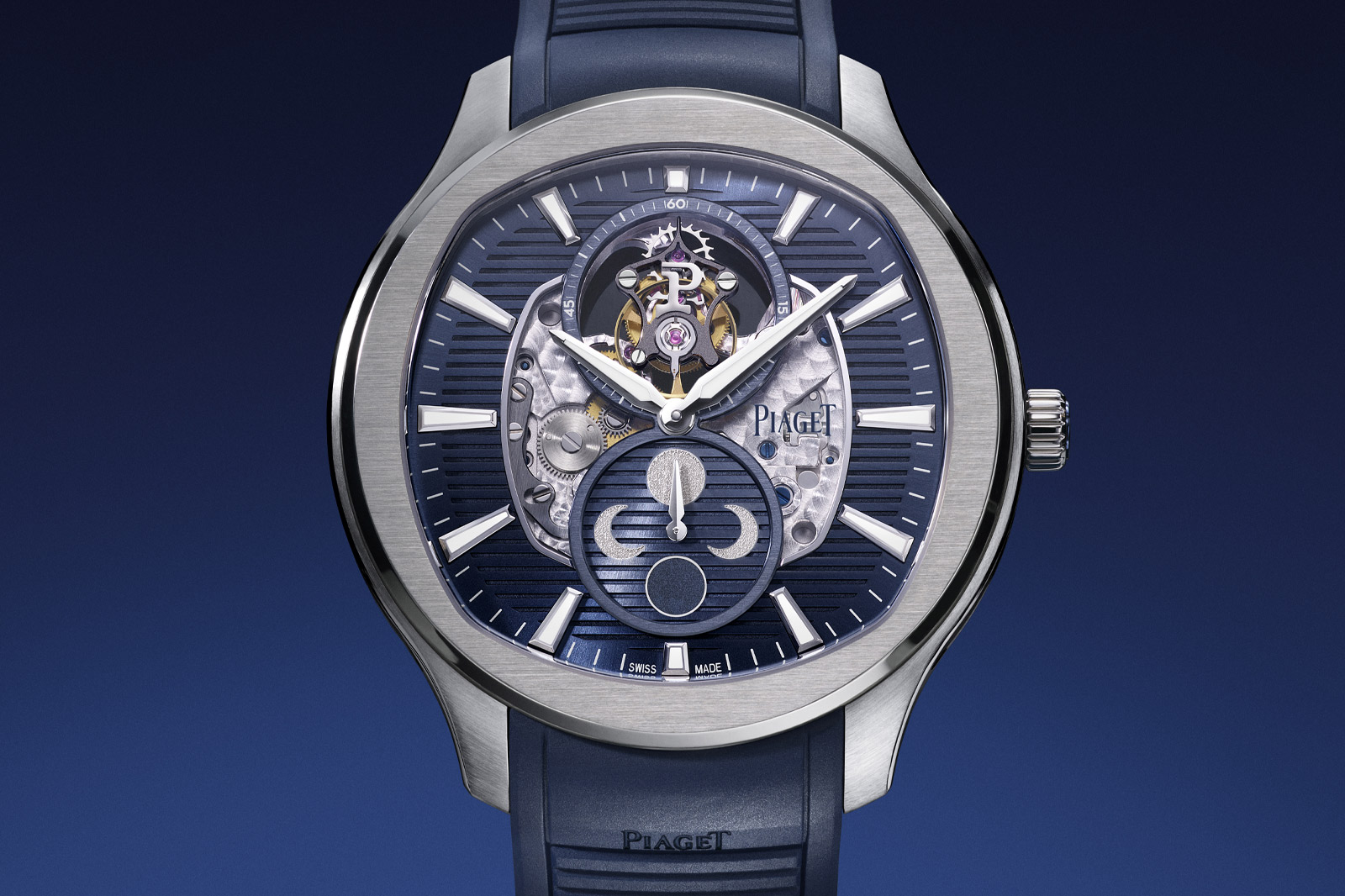


The Piaget Polo is something of a chameleon in the watchmaking world. It can be a luxurious dress watch, it can be a practical sports watch, it can be a sleek, ultra-thin skeleton. One thing it’s never been until now is a flying tourbillon. That has changed though with the introduction of the new Piaget Polo Flying Tourbillon Moonphase – the first Polo with a flying tourbillon.
In terms of shape, the new Polo draws on the collection’s heritage with a porthole shaped bezel in round case, but the size and materials on display are entirely contemporary. It measures a frankly huge 44mm in diameter and is made from titanium, a material that has seen vastly increased use in watchmaking as of this decade. It gives it contemporary feel, like it would be more at home in a display case of the science museum rather than on your wrist on the sidelines of a muddy field.

Why the science museum over an art gallery? Well, that comes down the dial. It’s partially open-worked, revealing the inner workings of the flying tourbillon at 12 o’clock as well as part of the gear train and plate with perlage finishing around the central hands. This is the first time a flying tourbillon has featured in the Polo range, which is designed to combat the effects of gravity on a watch’s movement. It features a rotating cage with a stylised P functioning as the seconds indicator, since the cage rotates once every 60 seconds. The flying part of the name comes from the fact it’s supported from beneath, giving it the appearance of floating in the dial.


At 6 o’clock is a stylised moonphase display, which uses a central hand to point to the phases of the moon. I can’t help but feel that it seems imprecise compared to a traditional moonphase display that constantly shows the current state of the moon. The Piaget instead requires you to work out a rough approximation based on the positioning of the hand in relation to the static phases. That being said, it will remain accurate for over 122 years before it would need adjustment.

Between the astronomical moonphase and the tourbillon, this feels like a very technical version of the Polo. If you want an artistic rendition maybe look at the Polo 79 from last year, which really ups the luxe with its heritage inspired look. It really highlights the diverse spectrum that the Polo collection operates on, running from modern and contemporary to vintage, bordering on Art Deco designs.

The movement powering the Piaget Polo Flying Tourbillon Moonphase is the Calibre 624P, based on the ultra-thin 600P. It’s manual-winding with a 37-hour power reserve, which feels low but is not surprising given the power-hungry nature of a tourbillon and the limitations of an ultra-thin construction. You’d just better be on top of winding it regularly if you want to see that 122-year accuracy on the moonphase be realised in full. Fortunately, there’s a corrector for that function at 9 o’clock if you do need to reset it.
Given this is an haute horological model of the Polo, it’s one of the most prestigious and is correspondingly price on request.
Price and Specs:
Model:
Piaget
Polo Flying Tourbillon Moonphase
Case:
44mm
diameter x 9.8mm thickness, titanium
Dial:
Blue,
open-worked
Water resistance:
100m
(10 bar)
Movement:
Piaget
calibre 642P, automatic, 23 jewels
Frequency:
21,600
vph (3 Hz)
Power reserve:
40h
Functions:
Hours,
minutes, tourbillon, moonphase
Strap:
Blue
rubber
Price:
Price
on request
More details at Piaget.
Oracle Time